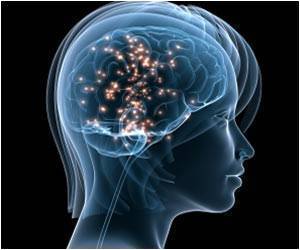According to new research, people who learn two languages at an early age seem to switch back and forth between separate sound systems for each language.

"There are two views: One is that bilinguals have different processing modes for their two languages - they have a mode for processing speech in one language and then a mode for processing speech in the other language. Another view is that bilinguals just adjust to speech variation by recalibrating to the unique acoustic properties of each language," he noted.
Gonzales's research supports the first view - that bilinguals who learn two languages early in life learn two separate processing modes, or "sound systems."
The study looked at 32 Spanish-English early bilinguals, who had learned their second language before age 8. Participants were presented with a series of pseudo-words beginning with a 'pa' or a 'ba' sound and asked to identify which of the two sounds they heard.
While 'pa' and 'ba' sounds exist in both English and Spanish, how those sounds are produced and perceived in the two languages varies subtly. In the case of 'ba,' for example, English speakers typically begin to vibrate their vocal chords the moment they open their lips, while Spanish speakers begin vocal chord vibration slightly before they open their lips and produce 'pa' in a manner similar to English 'ba.'
As a result of those subtle differences, English-only speakers might, in some cases, confuse the 'ba' and 'pa' sounds they hear in Spanish, explains co-author Andrew Lotto, associate professor of speech, language and hearing sciences at the University of Arizona.
Advertisement
Participants were then asked to identify whether the words they heard began with a 'ba' or a 'pa' sound.
Advertisement
The findings: Participants perceived 'ba' and 'pa' sounds differently depending on whether they were told they were hearing Spanish words, with the Spanish pronunciation of 'r,' or whether they were told they were hearing English words, with the English pronunciation of 'r.'
"What this showed is that when you put people in English mode, they actually would act like English speakers, and then if you put them in Spanish mode, they would switch to acting like Spanish speakers," Lotto said.
"These bilinguals, hearing the exact same 'ba's and 'pa's would label them differently depending on the context," he added.
When the study was repeated with 32 English monolinguals, participants did not show the same shift in perception; they labeled 'ba' and 'pa' sounds the same way regardless of which language they were told they were hearing. It was that lack of an effect for monolinguals that provided the strongest evidence for two sound systems in bilinguals.
Lotto said "This is one of the first clear demonstrations that bilinguals really do have two different sounds systems and that they can switch between one language and the other and then use that sound system."
This is true primarily for those who learn two languages very young, he asserted.
The study will be published in a forthcoming issue of Psychological Science, a journal of the Association for Psychological Science.
Source-ANI









